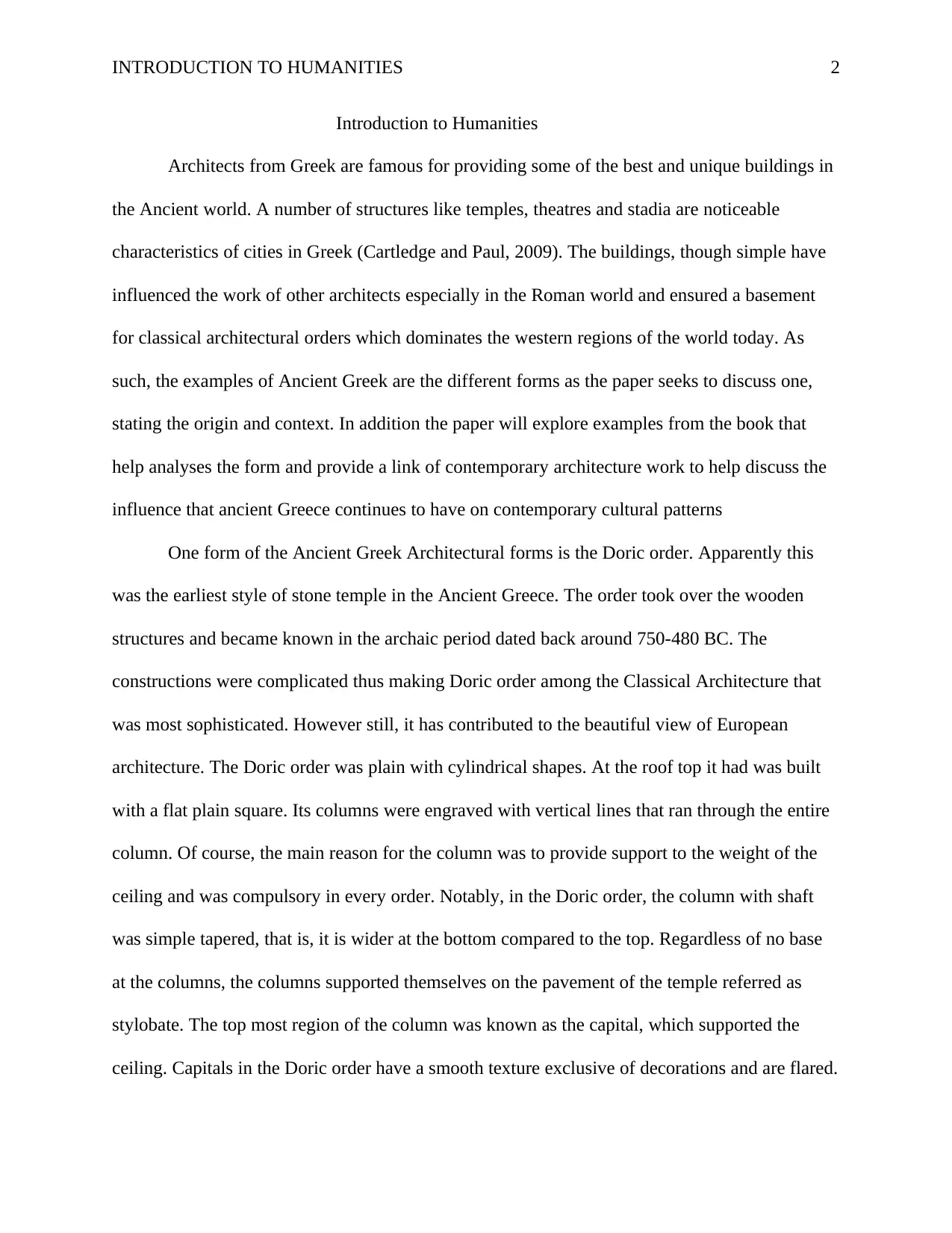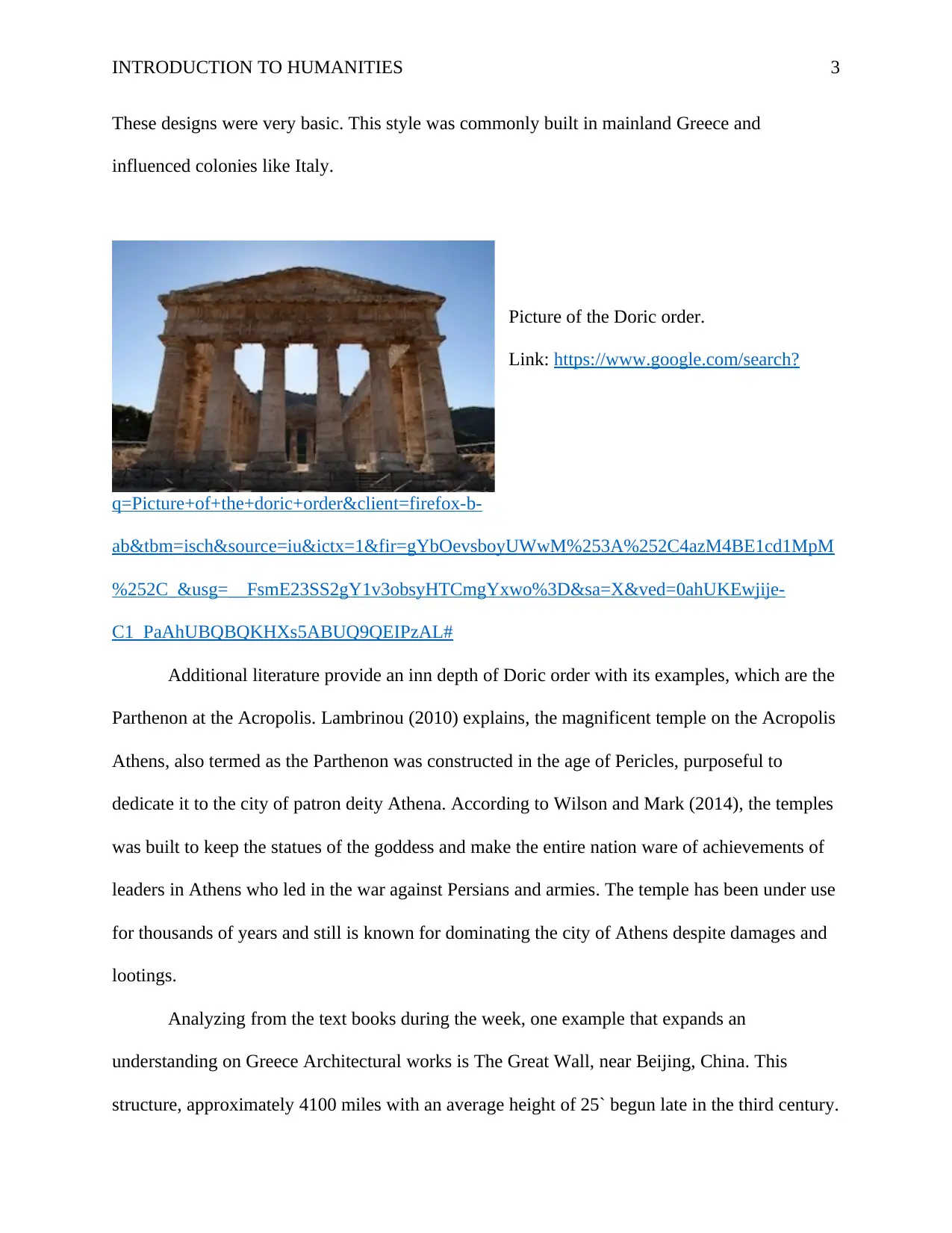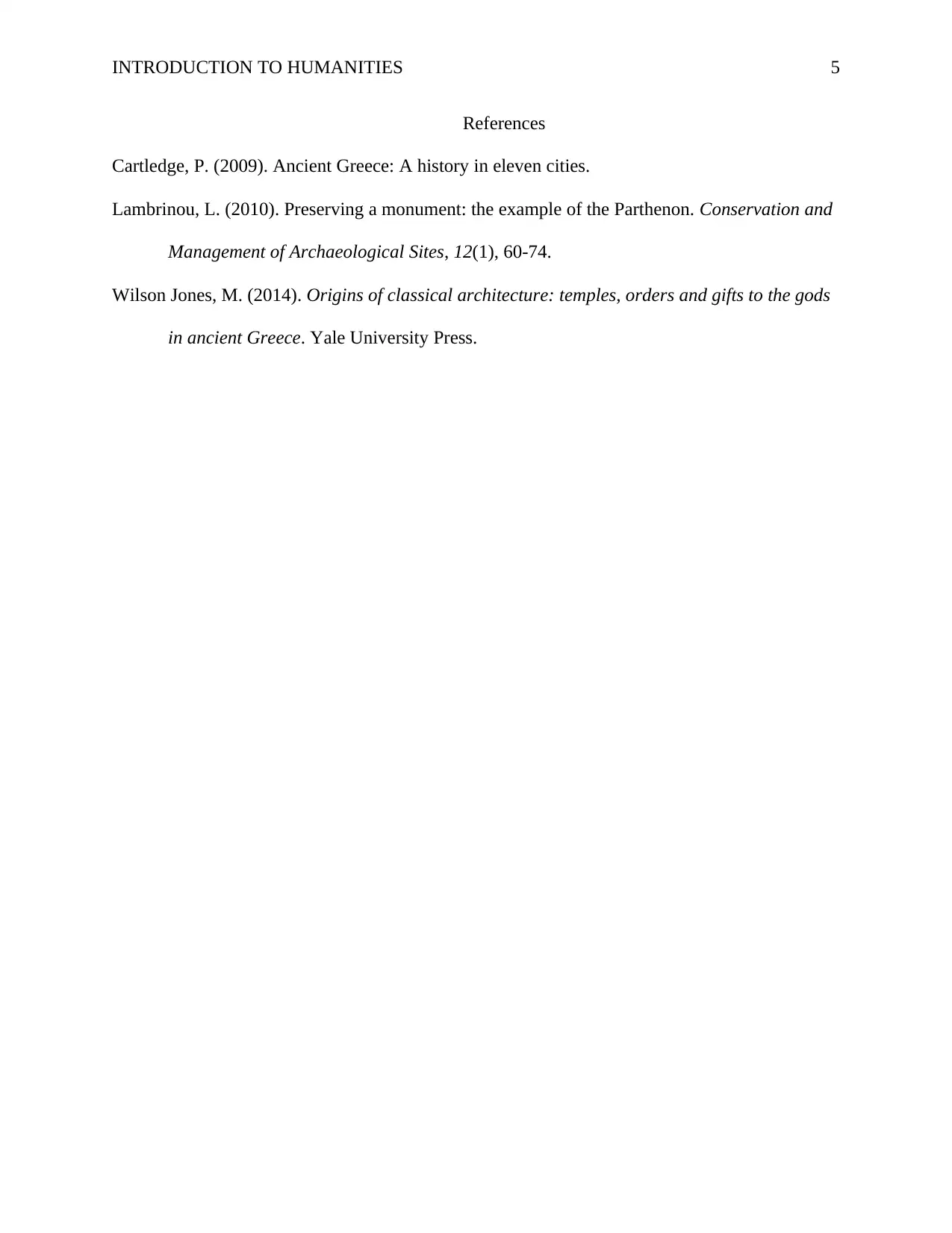Introduction to Humanities: Ancient Greek Architecture and Legacy
VerifiedAdded on 2021/05/31
|5
|894
|235
Essay
AI Summary
This essay provides an introduction to Ancient Greek architecture, focusing on the Doric order as a primary example of architectural form. The paper explores the characteristics of the Doric order, including its construction and design elements, and its historical context within Ancient Greece. It also examines the Parthenon, an example of Doric architecture. Furthermore, the essay draws connections between Ancient Greek architectural styles and contemporary cultural patterns, highlighting the lasting influence of Greek designs. The essay uses examples from the provided text to analyze the forms and provides references to support the arguments.
1 out of 5








![[object Object]](/_next/static/media/star-bottom.7253800d.svg)